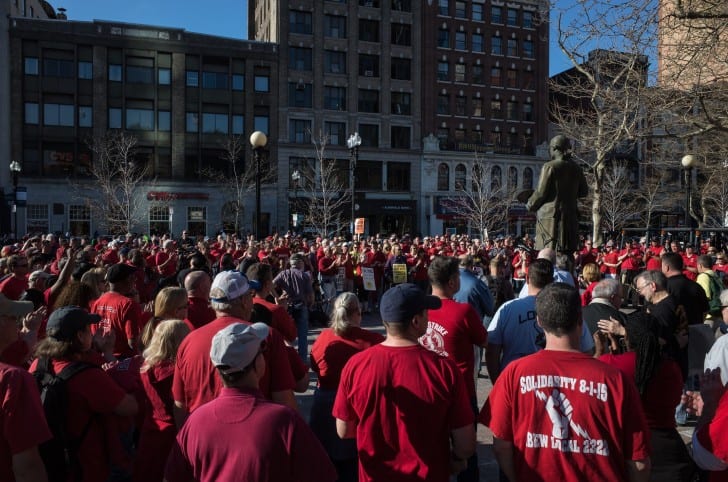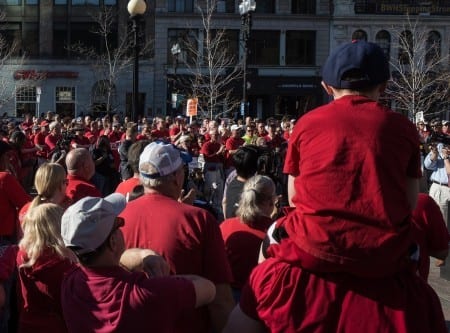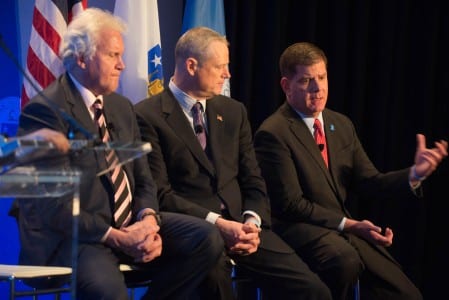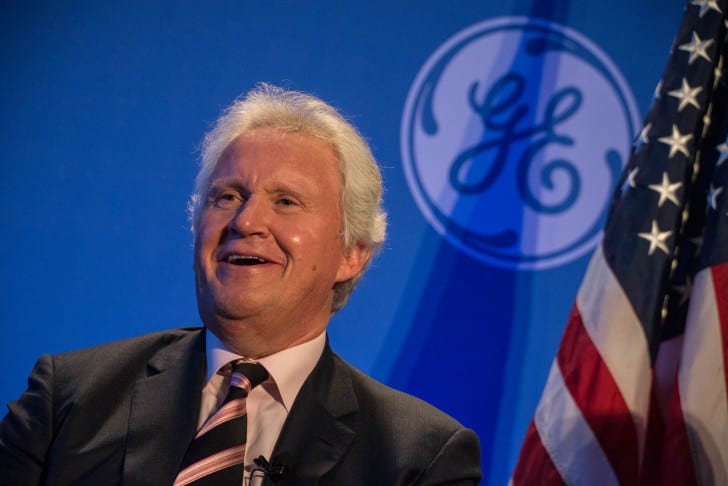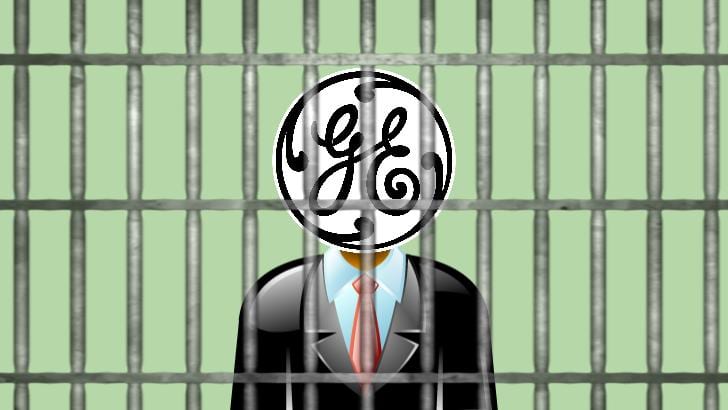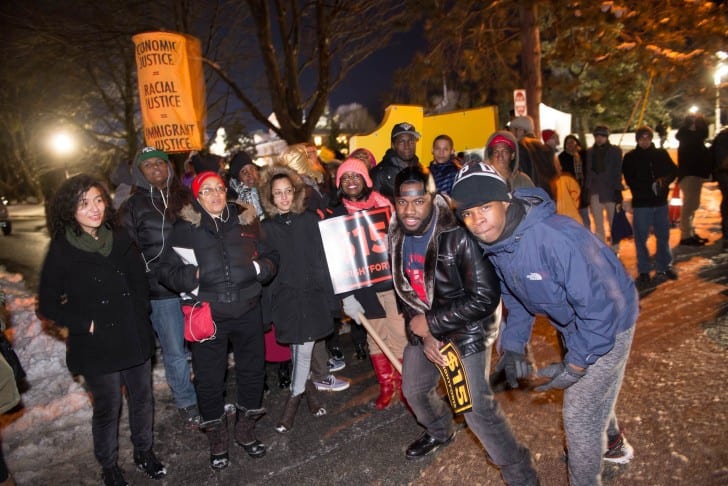September 18, 2016
BY JASON PRAMAS @JASONPRAMAS
When seemingly random things happen in city government, they’re always worth a second look. Which was certainly the case last week when Mayor Marty Walsh announced a new partnership between the City of Boston, the World Economic Forum, and the Boston Consulting Group to test self-driving cars—aka autonomous vehicles—on city streets.
The stated goal is “a year-long engagement focused on creating policy recommendations and supporting on-street testing of autonomous vehicles … to advance the safety, access and sustainability goals identified by the public during the Go Boston 2030 transportation planning process.”
The rationale—“building on prior World Economic Forum research into Personal Mobility and Self-Driving Vehicles, conducted in partnership with The Boston Consulting Group, and the Future of Cities”—is framed primarily in terms of ending urban traffic congestion, reducing carbon emissions linked to global warming, and reducing poverty.
Sounds like a worthy endeavor, right? Perhaps in a better world. But not the way this technology is being rolled out. Or, more precisely, the way it’s being shoved down the public’s throat. Despite being one of the least-mentioned transit options by residents participating in the aforementioned Go Boston 2030 process—appearing with similar frequency to waggish questions like, “When can I fly around the city like the Jetsons?”—it’s suddenly a policy priority.
Put bluntly, this plan has all the makings of yet another corporate boondoggle. This time on an international scale with profound implications at the local level. Think Boston 2024 on steroids. A passing glance at the players tells the tale.
The World Economic Forum is an extremely powerful network of the global capitalist elite. They work hand-in-glove with the leaders of every major industry to ensure that the rich and powerful get ever more rich and powerful—and democracy be damned. The Boston Consulting Group is a multinational “management consulting firm” that is one of the architects of the “race to the bottom.” Where companies are encouraged to move jobs to countries with the cheapest labor costs and worst human rights standards in the quest for ever larger profits. Its recent accomplishments include flacking for charter schools and the privatization of public education worldwide. Then there’s the junior partner, the City of Boston, that takes virtually all of its major policy cues from corporate think tanks and foundations. A pattern established by a series of mayors since the 1950s. Most notably, the late Tom Menino.
Such corporate networks and organizations have the money and connections to turn their priorities into the priorities of hapless government officials like Mayor Walsh—who always seems to be chasing after bragging rights for Boston being a “global city,” or a “city of innovators” or whatever—even when the resulting policy prescriptions directly attack his core grassroots constituencies. As we’ve seen with the GE Boston Deal debacle.
For example, Walsh is known as a labor mayor. Someone who was put into power by local unions. Yet when considering this particular policy issue—self-driving cars—in that light, a number of serious potential problems for Boston area workers immediately present themselves.
To focus on the most obvious one, switching over from our existing fleet of cars and trucks to self-driving cars and trucks—in the service of expected mega profits to the auto, energy, and technology industries—will likely result in massive job loss to a huge number of professional drivers. Many of whom are taxi drivers and limo drivers whose jobs are already under threat of destruction by mostly unregulated “online transportation network companies” like Uber and Lyft. And many people who hold those professional driving jobs—like truck drivers or MBTA bus and train drivers—are members of labor unions like the Teamsters and the Boston Carmen’s Union that are already threatened by technologies being developed for private interests. Not for the public good.
What are the plans to help workers displaced by self-driving cars? Apparently the usual corporate non-plans. A September 2015 report by the Boston Consulting Group put it this way: “Rather than wage a doomed battle against progress, affected incumbents might be better advised to use the current ‘calm before the storm’ to adapt their business models to this new technology and position their businesses to profit from a new era of mobility. That is the key message that [vehicle manufacturers], dealers, and suppliers must convey while they work with governments on good-faith efforts to mitigate the impacts on those most negatively affected.”
The report’s most specific suggestion is that governments should provide: “job-retraining and placement services and compensation for income losses from unemployment.”
Anyone who has ever seen what actually happens in instances of mass layoff knows exactly what will follow in practice. In the best possible scenario, some affected workers—not all—will qualify for extended unemployment, and receive some training for job markets that don’t have enough openings to make up for the jobs being destroyed. After unemployment runs out—and even extended unemployment typically runs out in one-to-two years depending on the program—the displaced workers who have not managed to find new jobs are screwed.
And as shown above, the industries and “consultants” doing the damage to the affected workers will not have to pay a cent for any of the havoc they wreak. The burden of such “externalities” as the immiseration and dislocation of thousands of professional drivers in Boston alone is to be borne by already overwhelmed and underfunded public programs—where they have not already been eliminated by the ongoing corporate onslaught against the public sector led by those same industries and consultants.
On those grounds, the city should pull out of this incipient arrangement and pursue only those future transit options purpose-built to help working people rather than harm them. Self-driving vehicles could be of great benefit to humanity depending on how they’re produced and deployed. But shadowy corporate networks like the World Economic Forum and the Boston Consulting Group—given their long history of looting public goods for private profit—are absolutely the wrong institutions for municipal governments to be partnering with on such a critical project as the introduction of a major new technology.

Apparent Horizon is syndicated by the Boston Institute for Nonprofit Journalism. Jason Pramas is BINJ’s network director.
Copyright 2016 Jason Pramas. Licensed for use by the Boston Institute for Nonprofit Journalism and media outlets in its network.




